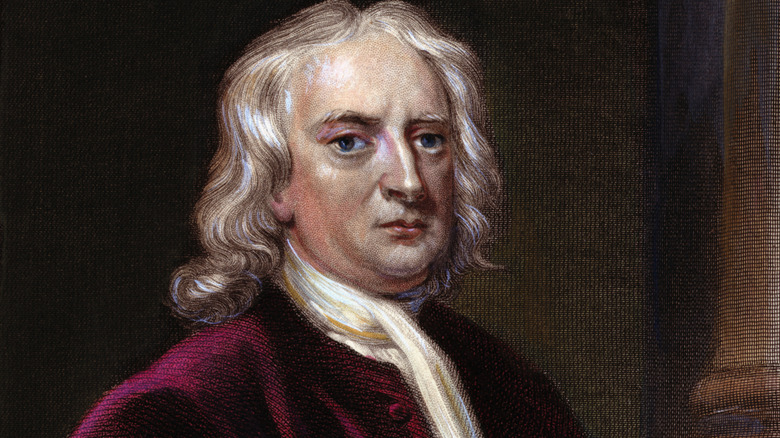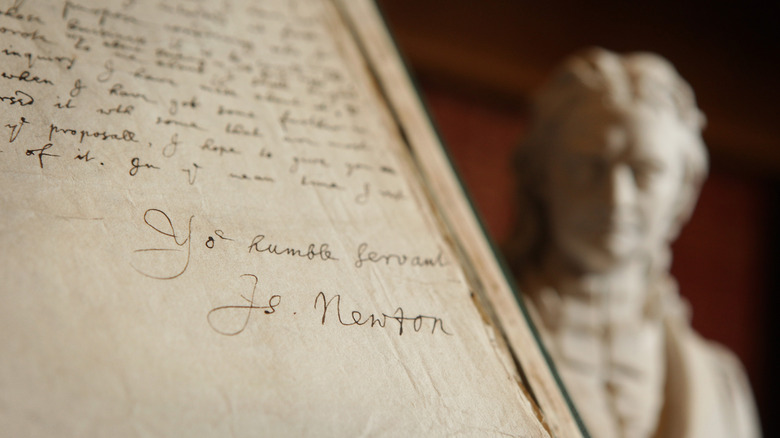Sir Isaac Newton's End Of The World Prediction Is More Complicated Than We Thought
According to one of the greatest scientific minds in history, the world is going to end in 2060. At least, that's what a rare collection of papers by Sir Isaac Newton appears to suggest, but the foundations of this prediction aren't what you'd probably expect them to be. Although Newton is remembered today for his achievements in science and mathematics, particularly his work developing the laws of motion and the basis of calculus, few people know that he was also a devout man of faith, and his prediction for the end of the world was, in fact, a religious prophecy.
Science and religion are often seen as being at odds, but Newton didn't think this way at all. He was a practitioner of natural philosophy, a field of study popular in the Christian world between the Middle Ages and the 19th century that blended aspects of physics, biology, and theology while not quite fitting into any category. Natural philosophers saw the natural world as a lens through which to study God. Thus, in Newton's mind, his seminal discovery of gravity was also a discovery of God himself in action.
Newton read the Bible with the same analytical approach he took to the sciences. He believed that the concept of time as it affects humans does not apply to God, and that God therefore knows all events that will ever transpire. He believed that biblical prophecies were literal accounts of future events, but he wanted to know how far in the future they would happen.
Newton's religious views were highly controversial
During his lifetime, Newton kept his theological works highly private, which may have been in part to avoid conflict with the Anglican Church. The two were at odds because the Church preached the doctrine of the Trinity, something which Newton strongly rejected under the belief that God has no equals. When Newton died in 1727 without a will, a pair of distant relations took possession of all his private papers, and chose to keep the work hidden from the public because they were devout Anglicans who didn't want to publicize what they saw as heretical material.
Newton's private papers later passed, via marriage, into the wealthy Portsmouth family, which kept the works hidden for generations. In 1936, however, one of the Portsmouths fell into debt and had to sell Newton's papers at auction. They were purchased by Jerusalem-born scholar Abraham Yahuda, who held them until his death, after which he willed the papers to the National Library of Israel, where they arrived in 1969. It was only at that point, over 240 years after Isaac Newton died, that his work on biblical prophecies finally came to light, instantly attracting scholars from around the world. For the most part, Newton shied away from making any firm predictions about future dates, which was probably for the best considering how his work on physics was misread for years. That's what makes it so alarming that, when it came to predicting Armageddon, Newton set a firm answer of 2060.
Why Newton set 2060 as the world's expiration date
Newton reached his end of the world prediction late in life, although precisely when is unknown. The date, and the calculations he used to determine it, were found written on a letter addressing him as "Sir Isaac Newton," meaning he wrote it after his knighthood was bestowed in 1705. The actual math he used to reach the date was simple arithmetic, but it was built on one specific belief: his rejection of the doctrine of the Trinity.
Newton believed that Trinitarian religious powers like the Catholic and Anglican churches were an apostate system whose members had abandoned God's true will. He believed this system would fall with the Battle of Armageddon as depicted in the Book of Revelations, and that the world as we know it would end and be replaced by the 1,000 year kingdom of God on Earth.
In order to determine the date of Armageddon, Newton used the prophetic period of 1,260 days, mentioned several times in Revelations and the Book of Daniel. Like many biblical scholars of the time, he believed these days actually represented future years in prophecy, and determined that 1,260 years was the time that would pass between the beginning of the apostate system and the end of the world. He set the origin of the apostasy at 800, coinciding with the founding of the Holy Roman Empire, and by adding 1,260 years, determined that Armageddon will be upon us in 2060.


